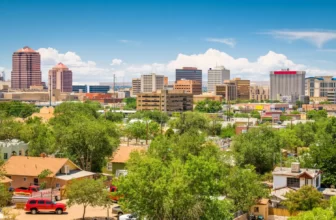In India, the legal landscape surrounding cannabis, including weed, is intricate and varies across regions. Globally, there is a shift towards more liberal cannabis laws, and India’s stance is particularly noteworthy. The central legislation, the Narcotic Drugs and Psychotropic Substances Act (NDPS) of 1985, plays a crucial role, prohibiting the use of cannabis resin and flowers while permitting the use of leaves and seeds. This creates a complex legal environment where the legality of cannabis varies by state. Some regions have embraced the cultivation of hemp for industrial and scientific purposes, reflecting a nuanced approach to cannabis regulation.
Key Takeaways
- The NDPS Act of 1985 is the primary law governing cannabis in India, banning certain parts of the plant while allowing the use of leaves and seeds.
- Indian states exhibit diverse regulations regarding cannabis, ranging from strict prohibition to allowances for hemp cultivation.
- Despite legal restrictions, cannabis, particularly in the form of bhang, holds a significant place in Indian culture and religious practices.
Historical Overview of Cannabis Regulation in India
Cannabis has been intertwined with Indian culture and history for millennia, with its earliest known use dating back to 2000 BCE. In Indian society, cannabis has been consumed in various forms, such as charas (resin), ganja (flower), and bhang (seeds and leaves). The British colonial period marked the beginning of formal cannabis regulation, culminating in the Indian Hemp Drugs Commission Report of 1893-94. This report acknowledged that moderate cannabis use was largely harmless, reflecting a nuanced understanding of its role in Indian society.
The landscape of cannabis regulation in India underwent a significant transformation with the enactment of the NDPS Act in 1985. This Act, influenced by global drug control policies, prohibited the use of cannabis resin and flowers, which are typically associated with recreational use. However, it permitted the use of leaves and seeds, allowing for the continued cultural and religious consumption of bhang. This legislation represents a compromise between traditional practices and the pressures of international drug control norms.
Throughout its history, the legal status of cannabis in India has been shaped by cultural, religious, and international influences. The NDPS Act reflects an attempt to balance these diverse factors, maintaining a unique stance in the global context of cannabis regulation.
Medical Cannabis in India: Legal Provisions and Accessibility
In India, the legal status of medical cannabis is a complex and evolving issue. The central legislation, the NDPS Act of 1985, provides a legal framework that permits the use of cannabis leaves and seeds, indirectly facilitating the availability of certain cannabis-infused medical products. However, the absence of a comprehensive national policy on medical cannabis creates challenges in accessibility and consistency across different states.
The opening of India’s first medical cannabis clinic in Bangalore in 2020 marked a significant step towards recognizing the medicinal value of cannabis. This clinic offers cannabis-infused tablets for medicinal purposes, indicating a shift in perception towards the therapeutic potential of cannabis. However, patients seeking medical cannabis face numerous hurdles, including limited availability, lack of awareness, and varying state laws.
The Indian government’s stance on medical cannabis remains cautious, with a focus on research and controlled use. While some states have shown a willingness to explore the medical applications of cannabis, the national policy landscape remains fragmented. This results in a scenario where access to medical cannabis is limited and often confined to specific regions or conditions.
Current Legal Status of Recreational Marijuana in India
The current legal status of recreational marijuana in India is predominantly prohibitive. The NDPS Act of 1985 plays a central role in this, explicitly banning the production, sale, and use of cannabis resin and flowers, which are commonly associated with recreational marijuana. The Act categorizes possession of these parts of the cannabis plant as a criminal offense, subject to legal penalties that vary based on the quantity involved.
Despite the global trend towards the legalization of recreational cannabis, India maintains a stringent stance. The possession of recreational marijuana can lead to severe legal consequences, including imprisonment and fines. The severity of the punishment is contingent on the quantity possessed, with harsher penalties for larger amounts.
This strict legal framework reflects India’s cautious approach to recreational cannabis. The government’s priority remains the prevention of drug abuse and the protection of public health. While there is a growing global dialogue on the potential benefits of recreational cannabis, India’s laws continue to emphasize control and prohibition.
The legal landscape for recreational marijuana in India is thus characterized by its restrictive nature. While there are discussions and debates about reforming these laws, significant changes in the legal status of recreational marijuana remain uncertain in the near future.
Possession, Cultivation, and Consumption: What’s Allowed in India?
In India, the laws governing the possession, cultivation, and consumption of cannabis are defined primarily by the NDPS Act and supplemented by state-specific regulations. The NDPS Act prohibits the production and sale of cannabis resin and flowers but allows the use of leaves and seeds, leading to the legal consumption of bhang, a traditional cannabis-based drink.
Cultivation of cannabis for industrial purposes, such as hemp, is legal in some Indian states. This cultivation is subject to state regulations, which often require licenses and adherence to strict guidelines. However, personal cultivation of cannabis for recreational use remains illegal across the country.
The possession of cannabis is a legally sensitive issue in India. While the possession of small quantities for personal use might attract lesser penalties, possession of larger quantities can lead to severe legal consequences, including long-term imprisonment and substantial fines. The definition of what constitutes a ‘small’ or ‘commercial’ quantity varies, adding to the complexity of the legal landscape.
What Future for Cannabis Legislation in India?
The future of cannabis legislation in India appears to be on a path of cautious evolution. With global trends increasingly favoring the legalization and decriminalization of cannabis, there is a growing conversation in India about revisiting its cannabis laws. States like Uttarakhand and Himachal Pradesh have shown interest in legalizing hemp cultivation for economic benefits. However, any significant changes at the national level are likely to be gradual, reflecting a balance between traditional cultural practices, public health concerns, and international drug control policies. The potential for legal reform remains a topic of active debate and speculation in India.
To Sum Up
Is Marijuana legal in India? The answer is complex. The NDPS Act of 1985, along with state-specific laws, creates a nuanced legal landscape for cannabis. While certain uses, like the consumption of bhang, are permitted, the production and sale of cannabis resin and flowers are prohibited. The legal status of medical and recreational cannabis remains restrictive, with significant penalties for violations. As global perspectives on cannabis evolve, India’s stance may change, but currently, the legal framework is predominantly prohibitive. Staying informed through reliable sources is essential for understanding the latest developments in cannabis legislation in India.









